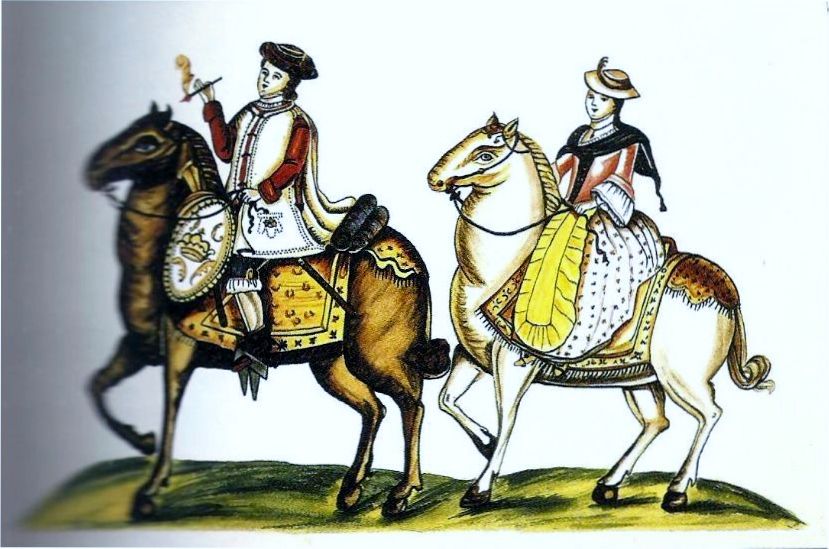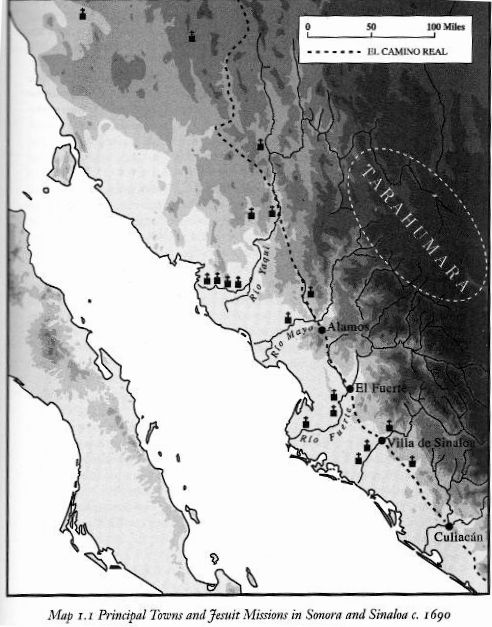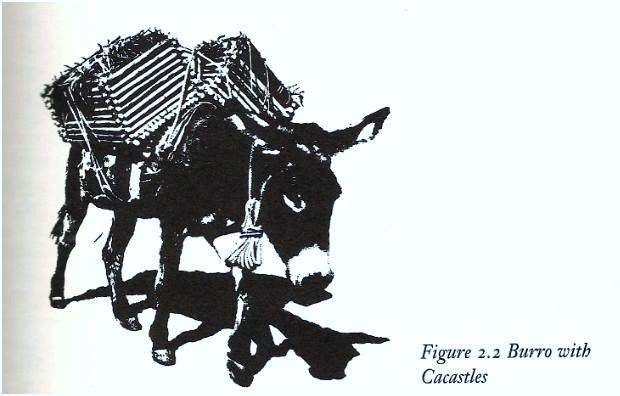A
California Soldier and his wife
After
393 pages of text, dozens of maps and even more illustrations, a
glossary, pages of footnotes in small type, and a bibliography, I
finally finished Antigua California. [And,
as DavidK pointed out, it was published in 1994 – not 1926]
What
a learning experience!
Although
stubborn and quite possessive, the Jesuits who explored California
showed a great deal of foresight. Sent to secure California for the
crown and fend off claims from other nations, they found a desolate
land, lacking fresh potable water and deep-water ports. Stone Age
savages could be quite hostile, although their weapons were no match
for those of the Spanish.
So,
what did these Soldiers of Christ come up with?
An
amazing organization with provisions for making the impossible happen
with some interesting twists.
Where
to start?
In
order to conduct explorations, they needed money. Not money subject
to being granted or withheld by non-Jesuit sources, but funds of
their own. So, what did they do? They established a separate fondo
piadoso, a Pious Fund made up of donations by wealthy benefactors
in the Old and New Worlds. And, they needed assurance from the crown
that it would not interfere with the fund. However, they also needed
funding from the crown and had those monies put into their pious fund
where the viceroy or his people couldn't get to it.
And
then, they dreamed up – or modified – an organization to make
things work.
If
you notice, the king and the viceroy are nowhere in the chart!
A
Visitador was a kind of Chief Inspector in charge of the
operations of the ecclesiastical entity. So, the chief honcho in
California, The Father Visitador, was only responsible to the chief
honcho of the Jesuit Order who, in turn, was responsible to the Pope.
And, the Father Provincial in Mexico City – sort of like an
Archbishop – also wasn't in the chain – he reported to the
viceroy. There was the Father Procurator for California. His job was
to take orders from the Visitador in California and purchase the
supplies from the special Pious Fund.
Neat.
Right?
Supplies
were ordered as needed, but the Procurator in Mexico City had to
gather, store, and see that they were delivered. The Jesuits had a
huge plot of land north of Mexico City called Rancho Arroyo. That's
where herds were gathered and large warehouses held the goods meant
for missions – not only in California but Texas and New Mexico.
Once everything was ready – and paid for, the Father Procurator for
California arranged to have it shipped to Compostela or Acapulco
where it was to be loaded aboard ship to sail to Loreto.
Easy.
Right?
[Knew
there was a bit more, didn't you?]
Ships
built on the west coast of New Spain weren't exactly reliable. You
see, there were no trees tall enough to make wood planks the length
needed for a substantial ship. So, they were pieced together and
lacked the rigidity needed to keep them together in rough weather and
seas. As a tidbit, the Jesuits owned or leased 22 ships in the 70
years they were in California and all but two of them were either
sunk in storms or crashed against the rocks.
In
time of drought and need, there was no guarantee that supplies would
reach California.
So,
the Father Visitador for California went a step further. He was
responsible for the Jesuits founding missions on the mainland of
Sonora and Sinaloa specifically for providing supplies to the
California missions.
So,
if supplies couldn't make it safely from Acapulco or the ports close
to Compostela, the Jesuits established alternatives just across the
Sea of Cortez. Those were established along large rivers flowing from
the Sierra Occidental. The only problem was that some were on the
Yaqui River and the Yaquis, along with their neighbors, the Mayos,
were not exactly friendly. It would take several decades, but those
Indians would raise up in a two-year war that killed over a thousand
and injured countless more.
And,
to get to those missions, the Jesuits established their own navy!
Launches were built and manned in the shipyard at Loreto and made the
hazardous journey to gather what they needed.
One
thing that has bothered me was why they selected Loreto and not La
Paz. The later is a large sheltered bay with deep water for big
ships. Loreto had a shallow bay with little shelter from bad weather.
If may probably be that La Paz did not have a direct supply of fresh
water throughout the year.
And
finally, once the supplies reached Loreto, the Father Procurator in
Loreto and his assistant, sorted the supplies to ensure they were
hauled to the various missions that had asked for them.
Soldiers
and civilians alike could order supplies and, with a set up like the
company stores of mines, had accounts to pa for what they received.
There
was no money of any kind allowed in California.
The
Jesuits believed money could only bring sin, especially in buying
alcohol. [It isn't in the book, but I'm willing to bet there were
more than a few enterprising individuals who found way to distill
strong drink. Far more potent than the wine used in Mass.]
Well,
back to studying and will post more the next time. Hope you enjoy.





Wow, who would have thought that they knew how to network back in the day like that, huh? And they did it w/out computers and cellphones! *gasp* =)
ReplyDelete